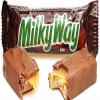In my source code, the unit of pathfinding is a grid.
How do I use a navigation mesh cell instead of a grid?
I think I will cast a OBB onto the ground, and use that as a cell,
instead of a polygon as a cell. Is it feasible?
I ask this because I don't know if this is possible for not defining a
cell before the game is started. Instead I create cells on the fly.
In my source code, the agent is able to reverse, dodge and wait
till a corridor is clear. But it only works for regular grids,
still haven't made up my mind on how to turn that into a navigation mesh.
Thanks
Jack






